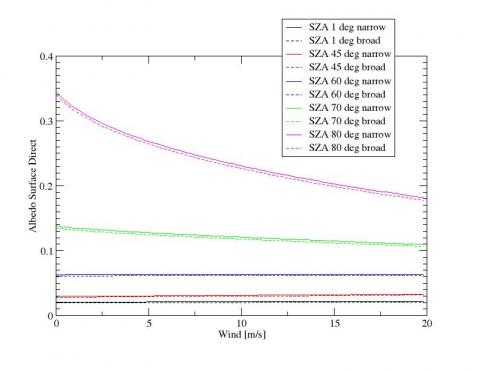Project 11 (TWP1): Development of the new IPSL-CM6 model to improve the energy flow within the climate system
Project lead: Olivier Boucher and Jean-Louis Dufresne
Post-doctoral researcher : Sunghye Baek and Adriana Sima
Supervision team: L. Fairhead, F. Hourdin, L. Bopp, P. Braconnot
Project Start/End: March 2014 – February 2015
IPSL-CM6 adopts new radiative transfer scheme RRTM, the rapid radiative transfer model (Clough et al. 2005). Sunghye Baek worked on the parallelization of RRTM in order that the results of different parallelization levels (sequential/MPI/OpenMPI) are consistent. The test has been done several machines and compilers either in local PC or those on IDRIS national computational center.
Oceans cover 70% of the total surface of the Earth. A precise estimation of the ocean surface albedo (OSA) is therefore important for the Earth’s radiation budget and climate modelling. We have developed a new parameterization of OSA in collaboration with Roland Seferian (CNRM), which allows us to include dependencies on wavelength, surface wind speed, chlorophyll content as well as the distribution of solar zenith angle. The albedo is decomposed into a direct albedo and a diffuse albedo term, each of them being divided according to the reflection process, i.e. a Fresnel surface albedo and an ocean volume albedo,
In addition to this work on radiation, a second post-doc has been to help the development with a focus on the latent heat flux over ocean. The link between its bias in AMIP runs and the SST bias in couple runs has already been established, and work to improve the latent heat formulation is in progress. Publications that summarize both works are in preparation.
Position offer and results (January 2017 update)
Figure 1 : Different surface direct albedo as a function of wind speed for fixed solar zenith angles (SZA). Solid curves are averaged over broad range of wavelengths from 200 to 4000 nm, dotted curves are averaged over a narrow range from 200 to 800 nm.

